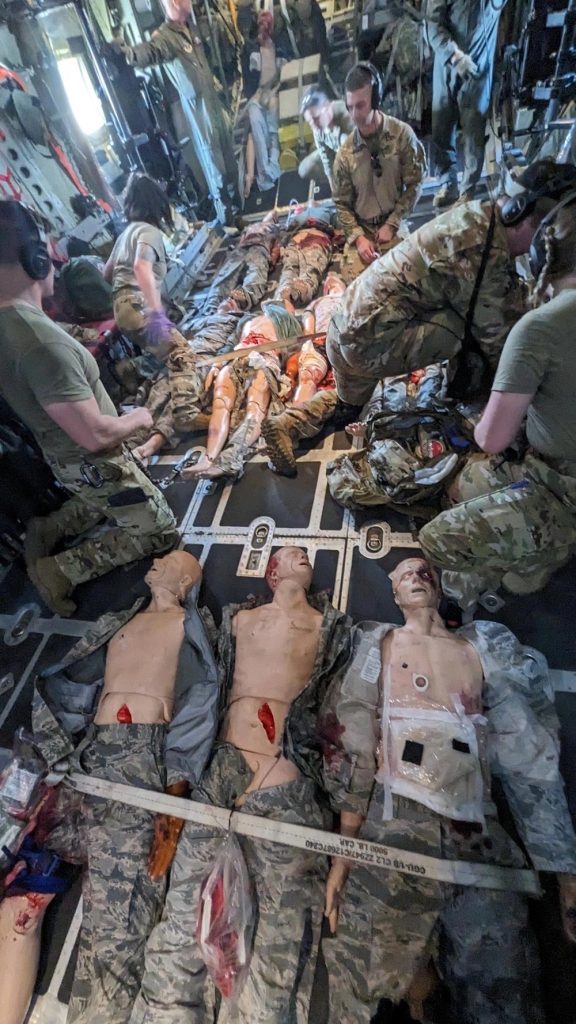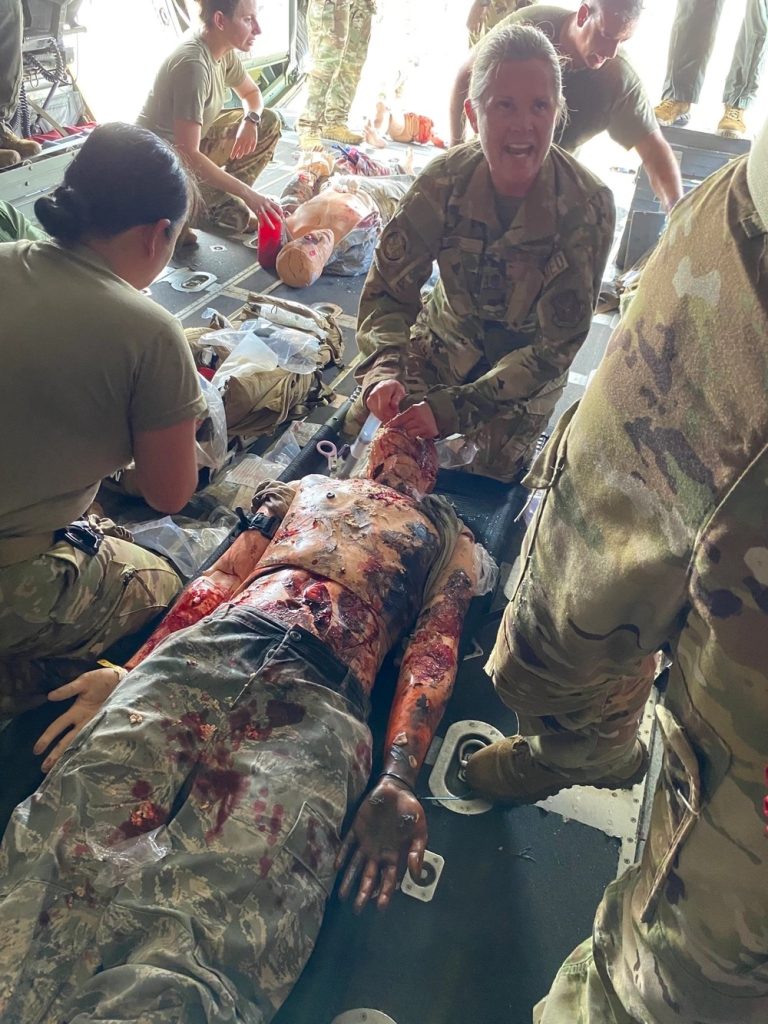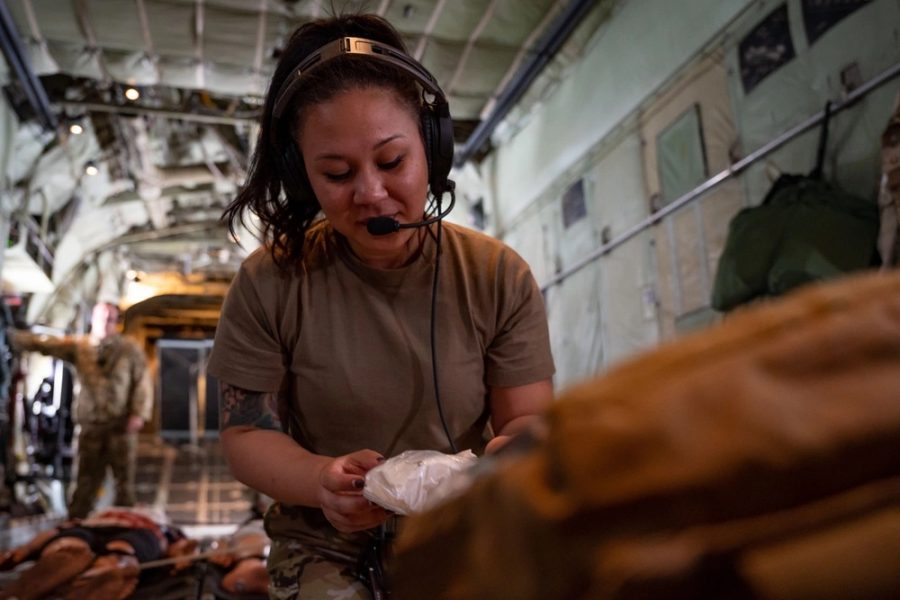Aeromedical evacuation Airmen practiced operating with degraded or denied communications as part of Mobility Guardian 23, a joint, multinational training exercise involving 70 aircraft and 3,000 personnel currently ongoing across the Indo-Pacific.
As described in a July 20 release, two aeromedical evacuation teams operated aboard a C-130 transport and moved 48 simulated patients on six “unregulated” missions, meaning the Airmen had to respond quickly and with little prior information on the patients’ conditions. Unlike in the past, the Airmen on these missions were attached to an expeditionary airlift squadron, which allowed them to provide medical care “immediately rather than waiting for a crew to be tasked and aircraft to be found to support the mission request,” the release stated.
One aeromedical evacuation Airman told Air & Space Forces Magazine that typically when an AE mission arises, an aircraft from an airlift squadron must be found and put on the mission, which can delay the response time. In this new concept, AE crews are embedded with those squadrons, which “accelerates getting the medical professional to the patient without having to route through the tasking organization,” said the Airman, who requested anonymity.
For example, if a transport aircraft is already flying a cargo mission with one or two AE Airmen aboard, the AE Airmen can help load cargo and be on hand to care for patients if a medical mission arises.

The Air Force operated in such a manner during the 2021 withdrawal from Afghanistan, when just one AE Airman often provided medical care aboard transport aircraft carrying hundreds of evacuees. Those Passenger Medical Augmentation Personnel often only had a small bag of supplies on hand, but they saved lives and delivered babies because they were on the scene when it mattered most.
Besides faster response times, the embedded system also helps avoid possible roadblocks that might occur from delayed or degraded communications.
“Patient movement cannot be delayed due to the inability to reach back to a [command and control] node,” Master Sgt. Todd Olsson, command training manager for Air Mobility Command’s aircrew training and operations branch, said in the release. “We are challenging our AE [crew members] to be prepared and proficient to respond quickly and efficiently, wherever and whenever they are needed.”
One of the most important elements of working in a comms-degraded environment is being able to make difficult decisions on the ground. Over the past 20 years, the anonymous AE Airman explained, crews have had relatively stable communications and procedures with which to contact supervisors or higher-level care for medical guidance. But in the future, they may have to take on more risk and possibly work out of regulations to get the job done, which is a mindset that takes getting used to.
“You’re asking crews to make smart decisions with the limited information they have,” he said. “It’s a change in thought process for the guy at the end of the rope actually performing the mission.”
Many of these decisions could mean life or death. Transport aircraft have only so much room for patients, and AE crews may have to decide which ones get evacuated and which stay behind.
“We have to wrap our heads around that and be OK with it,” the Airman said.

Maj. Weber Munsayac, command nurse evaluator for Air Mobility Command’s AE Standardization and Evaluation Branch, made a similar point.
“We must utilize our expertise, anticipate transport time, and make informed decisions while understanding the philosophy of the greatest good for the greatest number,” Munsayac said in the release. “Our resources need to be allocated to address severely wounded patients with the highest probability of survival.”
Attaching small AE crews to airlift squadrons may help them respond faster to patients, but it may also limit the number of supplies and experienced hands available to treat those patients. The anonymous AE Airman said crews may have to ask loadmasters or less-injured patients to apply tourniquets or perform other basic first aid tasks midflight. Despite the limited tools and personnel, the Airman emphasized that AE crews will do everything they can to move patients to higher care.
“On the airplane, you’re just a conduit, you’re just getting them there, with as much care as possible to make them better than they were when you picked them up,” he said.
